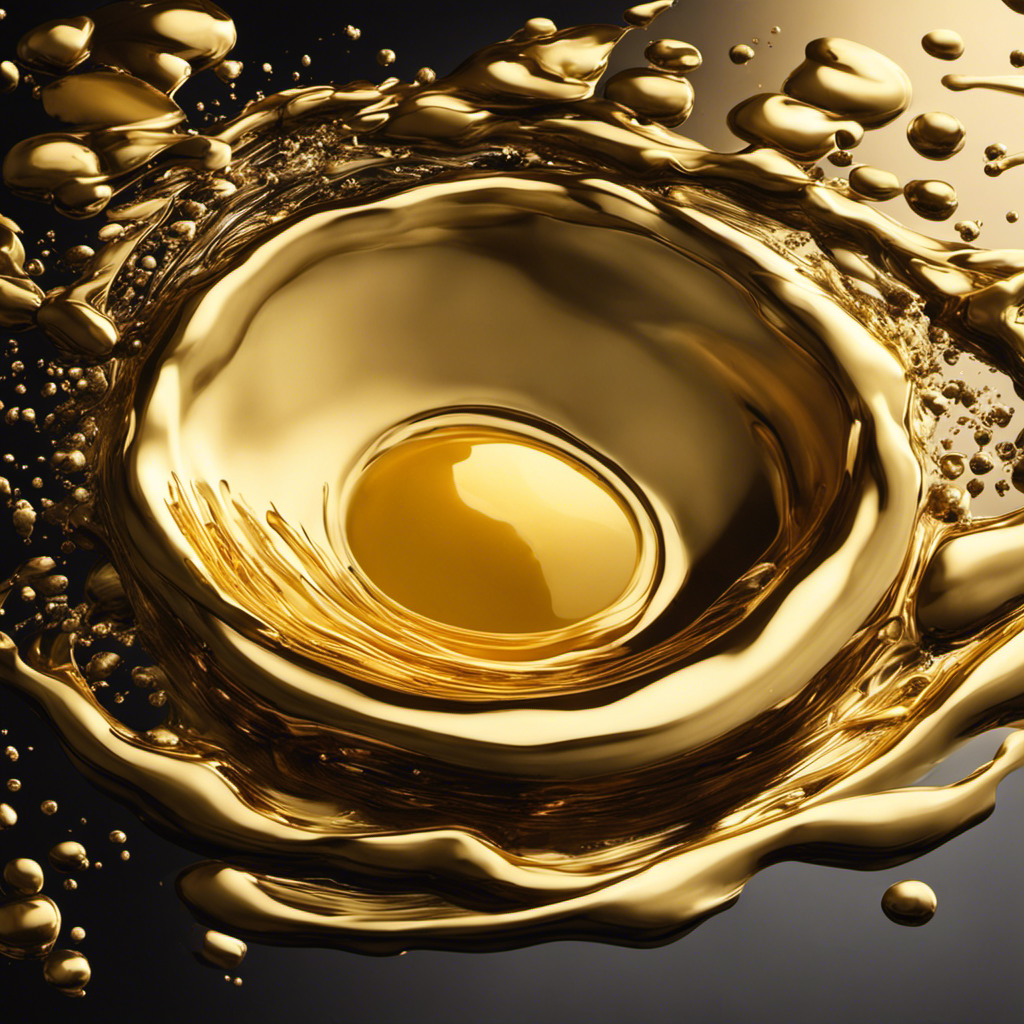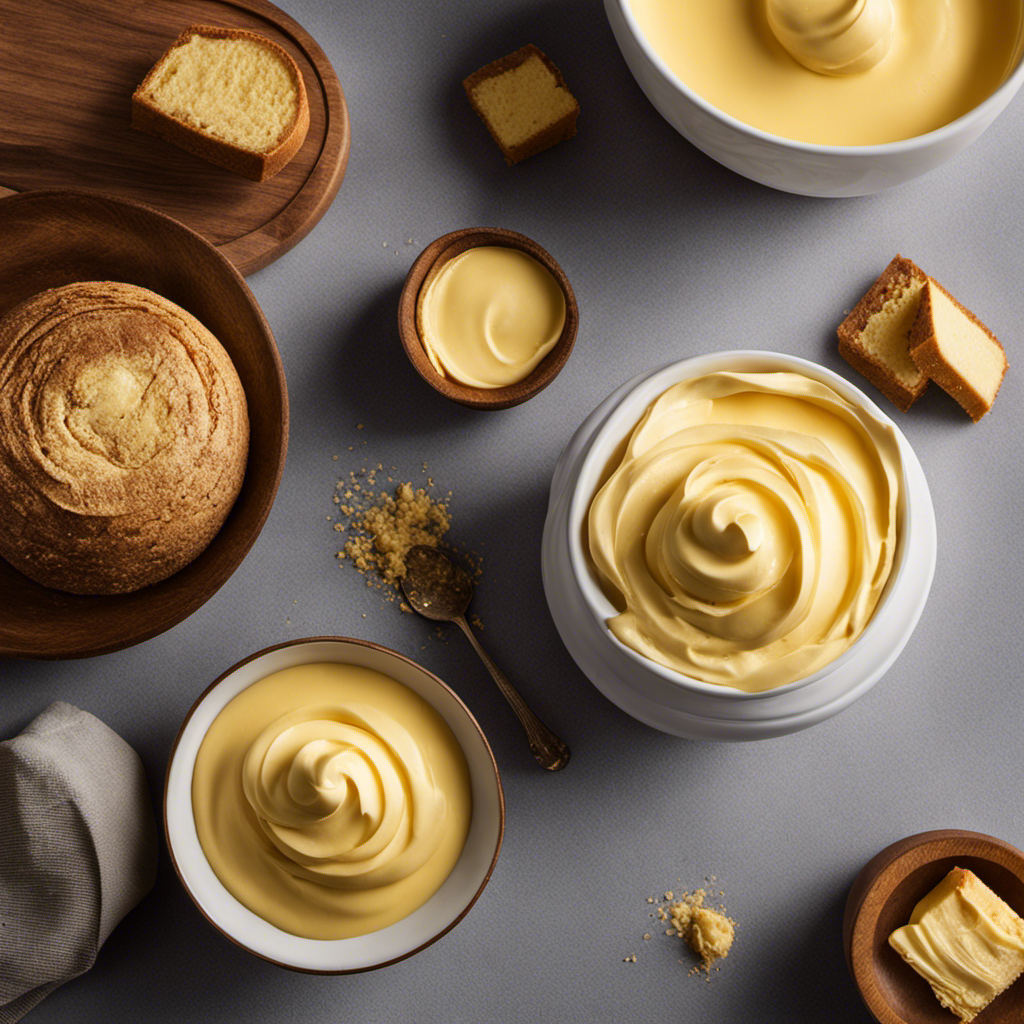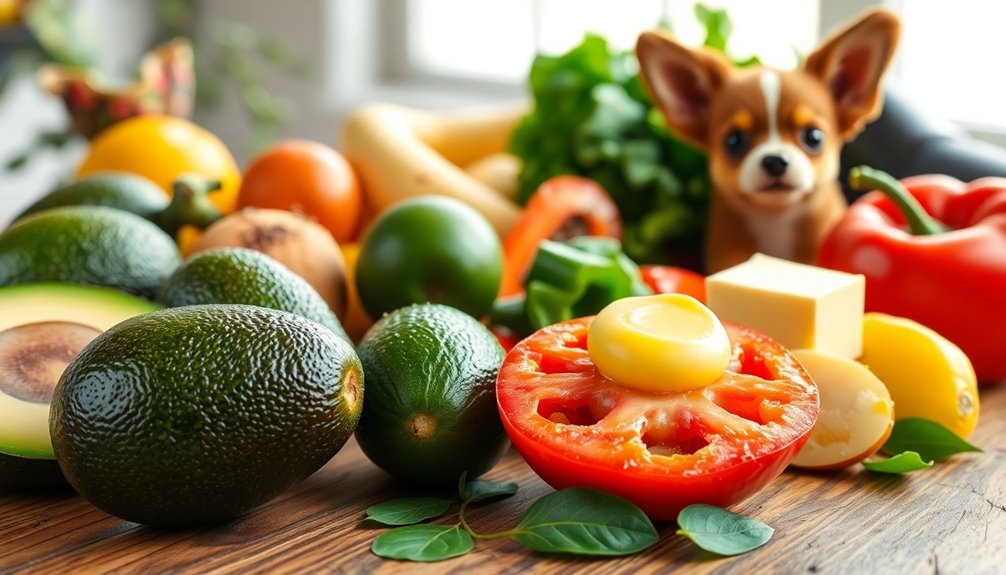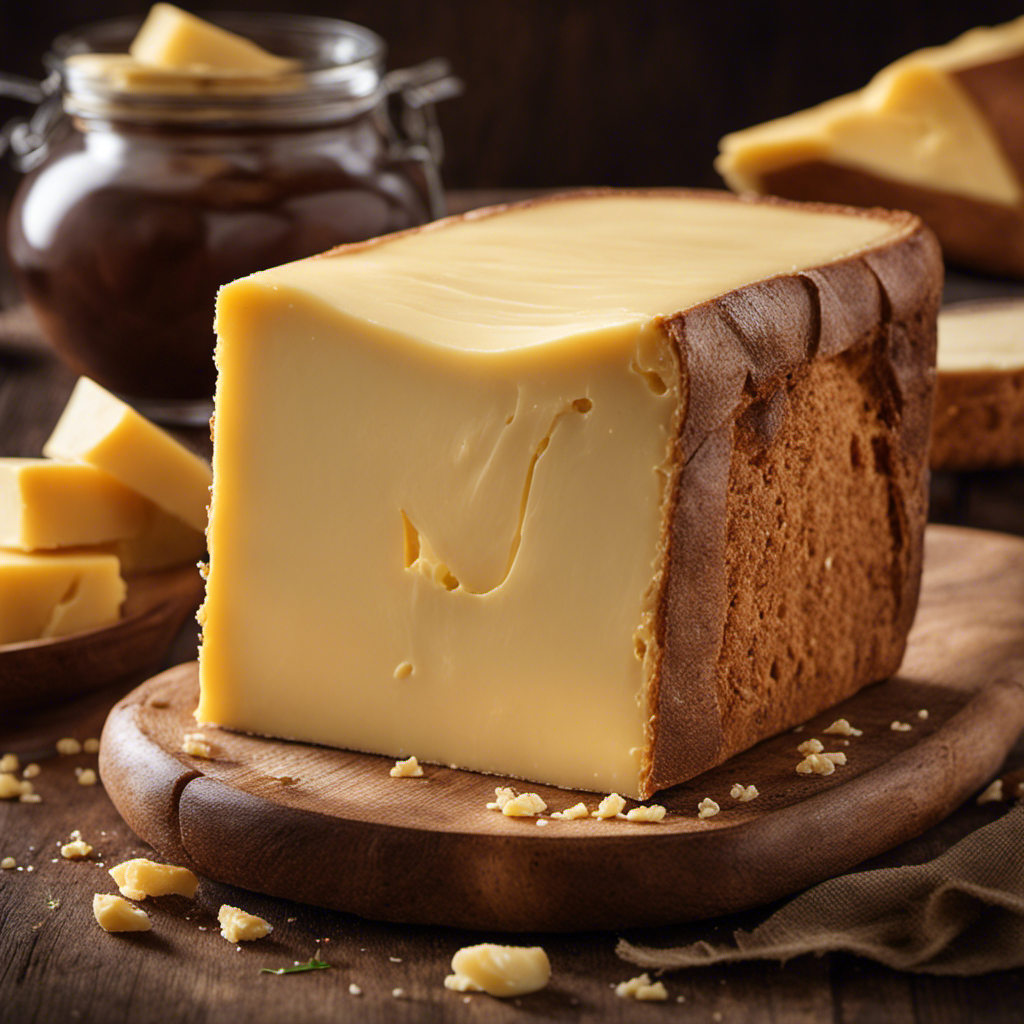I’ve always been curious about the specific temperature at which butter melts. Therefore, I decided to conduct an experiment to find out.
In this article, I’ll be diving into the science behind butter melting, exploring the factors that affect its melting point, and even discussing different types of butter and their varying melting points.
We’ll also take a closer look at how heat transforms butter from a solid to a liquid and offer some tips for properly melting butter in cooking and baking.
So, let’s get started and uncover the truth behind the melting point of butter.
Key Takeaways
- Butter melts when heated, as the fats in butter break down and separate.
- The melting point of butter is around 32-35°C (90-95°F).
- The type of fat in butter affects its melting point, with fatty acids with shorter carbon chains resulting in softer butter.
- Factors such as impurities, processing techniques, and additives can also affect the melting point of butter.
The Science Behind Butter Melting
If you want to understand why butter melts, you should know that it is made up of water, milk solids, and fat. When butter is heated, a series of chemical reactions occur that cause it to change from a solid to a liquid state.
The role of fats in this melting process is crucial. Fats are made up of molecules called triglycerides, which have a unique structure that allows them to hold onto each other in a solid state. However, when heat is applied, the fats start to break down, and the triglyceride molecules separate.
As a result, the solid structure of the butter begins to break apart, and the fats start to flow, turning the butter into a liquid. This process is known as melting, and it occurs at around 32-35°C (90-95°F) for butter.
Factors Affecting the Melting Point of Butter
To understand what affects the melting point of butter, you should consider factors like the type of fat and the presence of impurities. The melting point of butter can vary due to several factors that directly influence its texture and consistency. Here are some key factors that affect the melting point of butter:
-
Type of Fat:
-
Butter is primarily composed of milk fat, which consists of a mixture of different fatty acids.
-
The composition of these fatty acids can vary depending on factors such as the animal’s diet and breed.
-
Fatty acids with shorter carbon chains tend to have lower melting points, resulting in softer butter.
-
Presence of Impurities:
-
Impurities, such as water or other substances, can affect the melting point of butter.
-
Water acts as a lubricant between the fat molecules, reducing their attraction and increasing the melting point.
-
Other impurities, like salt or additives, can also alter the crystalline structure of the fat, affecting the melting behavior.
-
Processing Techniques:
-
The methods used to churn and process butter can impact its melting point.
-
Factors like temperature, agitation, and duration of processing can affect the formation of fat crystals and their stability, thus influencing the melting point.
Understanding these factors is crucial in controlling the texture and quality of butter for various culinary applications. The role of fats in butter melting is complex, but by considering these factors, we can better understand and manipulate the melting properties of this beloved ingredient.
Different Types of Butter and Their Melting Points
When making choices about different types of butter, you should consider factors like the type of fat and the presence of impurities, as they directly impact the melting points and overall texture of the butter. There are several types of butter available, each with its own unique qualities. Here is a table highlighting some popular types of butter and their melting points:
| Type of Butter | Melting Point |
|---|---|
| Unsalted Butter | 82°F (28°C) |
| Salted Butter | 90°F (32°C) |
| Clarified Butter | 97°F (36°C) |
| European Butter | 104°F (40°C) |
| Ghee | 120°F (49°C) |
To properly store butter and maintain its freshness, it is recommended to keep it refrigerated, tightly wrapped in its original packaging or an airtight container. Butter should be stored away from strong odors to prevent absorption of unwanted flavors. Additionally, storing butter in the coldest part of the refrigerator helps to maintain its quality for a longer period of time.
How Heat Transforms Butter From Solid to Liquid
As butter is heated, it undergoes a transformation from a solid state to a liquid state. This butter melting process occurs due to the unique composition of butter and the application of heat.
Here are some fascinating facts about why butter melts when heated:
- The melting point of butter is around 32-35 degrees Celsius (90-95 degrees Fahrenheit), which is relatively low compared to other fats.
- The main component of butter is milk fat, which is made up of triglycerides. These triglycerides have a crystalline structure in their solid state.
- When heat is applied to butter, the energy disrupts the organized structure of the triglycerides, causing them to break apart and transition into a liquid state.
- The process of melting butter is reversible. Once the heat is removed, the liquid butter will solidify again.
Understanding the butter melting process is essential for proper cooking and baking. Now, let’s explore some tips for properly melting butter in the next section.
Tips for Properly Melting Butter in Cooking and Baking
If you want your butter to transform into a liquid state smoothly, make sure you slowly heat it on low heat. This method ensures that the butter melts evenly without burning or separating. But what about softening butter? Is there a difference between melting and softening butter? The answer is yes. While melting butter involves completely transforming it into a liquid state, softening butter refers to bringing it to room temperature for easy blending with other ingredients. Knowing when to use each method is crucial for successful cooking and baking. To make things even more interesting, there are butter alternatives available for those following a dairy-free or vegan lifestyle. Let’s explore some options in the table below:
| Butter Alternatives | Melting Properties | Usage |
|---|---|---|
| Coconut Oil | Melts at a low temperature, imparts a subtle coconut flavor | Great for baking and sautéing, ideal for vegan recipes |
| Margarine | Melts at a higher temperature, similar to butter | Suitable for baking, spreads, and cooking, but contains more additives |
| Olive Oil | Liquid at room temperature, doesn’t solidify like butter | Perfect for sautéing, dressing, and dipping, adds a unique flavor to dishes |
| Avocado | Solid at room temperature, melts easily when heated | Excellent for baking, cooking, and spreading, provides a creamy texture and healthy fats |
Frequently Asked Questions
How Long Does It Take for Butter to Melt?
When discussing the melting point of butter, it’s important to consider factors such as fat percentages and color. These variables can impact how long it takes for butter to melt, as they affect the overall composition and structure of the butter.
Can I Microwave Butter to Melt It?
Yes, you can microwave butter to melt it. Microwaving butter is a convenient and quick method. However, be cautious not to overheat it, as butter can easily burn. Alternatively, you can also melt butter on the stovetop or in the oven.
Does the Shape of the Butter Affect Its Melting Point?
The color of the butter and the type of container it’s in do not affect its melting point. The melting point of butter depends solely on its composition, which is around 90-95 degrees Fahrenheit.
Can I Use Melted Butter Instead of Softened Butter in Baking Recipes?
Yes, you can use melted butter instead of softened butter in baking recipes. It’s important to note that using melted butter may affect the texture and consistency of your baked goods.
At What Temperature Does Clarified Butter Melt?
Clarified butter, often used in recipes, melts at a higher temperature than regular butter due to the removal of water and milk solids. The benefits of using clarified butter include a higher smoke point and longer shelf life.
Conclusion
In conclusion, understanding the melting point of butter is crucial for successful cooking and baking. By knowing the factors that affect the melting point, such as the type of butter and its composition, we can achieve the desired consistency in our dishes.
While some may argue that the melting point can vary depending on external conditions, it is important to note that proper temperature control and technique can overcome these challenges.
So, next time you’re in the kitchen, remember to melt your butter with precision for delicious results every time.










